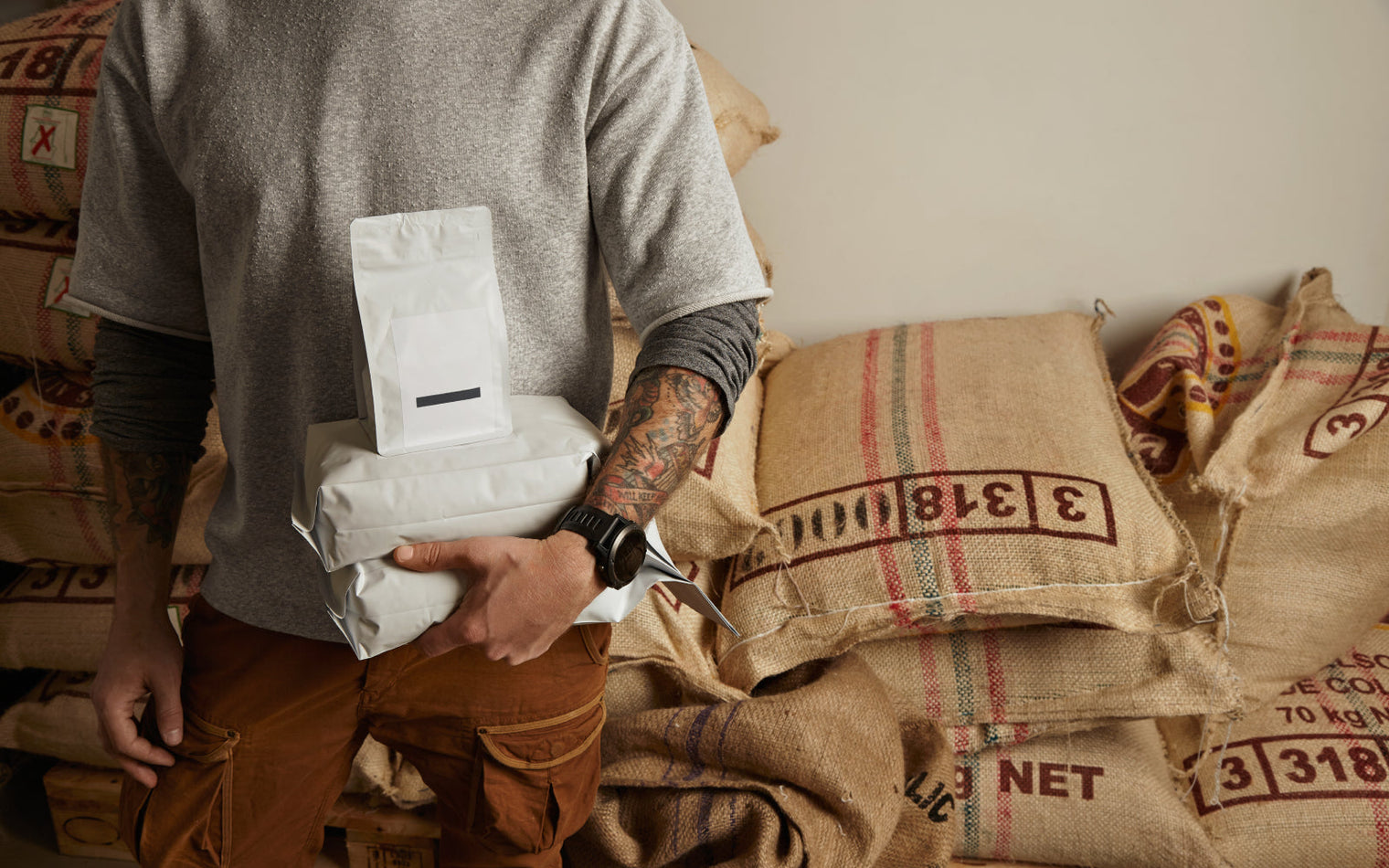Before coffee reaches your cup, it has a long journey behind it. From processing immediately after harvest to global transport – every step influences the taste and quality of the beans. Learn how coffee is processed, stored, and shipped to develop its full character.
The transport of coffee: A long journey to roasting
Before coffee reaches your cup, it has already undergone an impressive journey. From the coffee farms in the tropics to the roastery, it undergoes various processing steps that significantly influence its taste and quality.
Coffee processing: A crucial process
Coffee is first and foremost a cherry, and there are two main processing methods for extracting the beans: dry and wet processing . Both methods shape the flavor profile of the coffee and influence its final quality.
Dry processing: The traditional method
Dry processing, also known as "natural," is one of the oldest methods of processing coffee beans. Freshly harvested coffee cherries are spread out on large drying surfaces and turned regularly.
- Drying takes place on concrete surfaces, drying tables or directly on the ground.
- Due to sunlight, the moisture slowly evaporates from the cherries.
- During drying, the beans absorb fruity aromas from the pulp.
- After 3-5 weeks, the dried beans are mechanically freed from the pulp.
This method is particularly suitable for regions with little water and produces coffees with intense, sweet and often tropical-fruity notes.
Wet processing: Precision for clear flavors
Wet processing, also called "washed," takes place immediately after harvest. The cherries are processed within a few hours to prevent unwanted fermentation.
- The cherries are freed from their pulp in depulper machines.
- The beans undergo a fermentation of 12-48 hours to break down the remaining pectin layer.
- After fermentation, they are washed and sorted – inferior beans float to the top and are sorted out.
- The beans are then dried for 8-10 days in the sun or in special drying machines.
Washed coffees are known for their clear, fruity and floral aromas with brilliant acidity.
The way into the world: storage and transport
After processing, the beans are packed in jute sacks or GrainPro bags to preserve their quality during transport. They are then placed in containers and shipped by ship to roasteries worldwide.
| Means of transport | Features | Advantages |
|---|---|---|
| Ship | Slow transport, cost-effective | Suitable for large quantities, more environmentally friendly (in relation to quantity) |
| Airplane | Fast delivery, expensive | Ideal for specialty coffee with short delivery times |
| TRUCK | Transport within the producing countries | Important connection to ports and export centers |
During transport, the beans must be protected from moisture, heat and odors to preserve their flavors.
Influence of processing on taste
The choice of processing method has a significant impact on the taste profile of the coffee:
- Naturally processed coffee: sweet, fruity, full-bodied
- Washed coffee: Clear, lively acidity, fine aromas
- Semi-washed coffee (honey processed): Balanced sweetness and acidity
Regardless of the method, proper roasting plays a crucial role. Discover our espresso and filter coffee varieties , made from the world's finest beans.
Conclusion: Coffee travels a long way
From cultivation to processing to transportation, every stage has a decisive influence on the quality of the coffee. The processing method determines the flavor profile, while transportation preserves the freshness of the beans.
If you'd like to learn more about our sustainable coffee or have any questions, visit our contact page . Or try our coffee subscription to enjoy freshly roasted coffee regularly!




